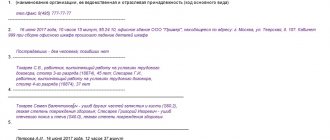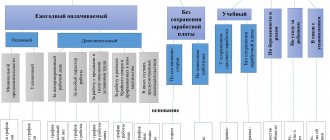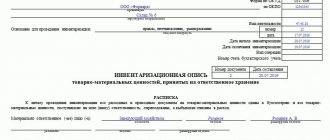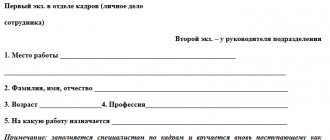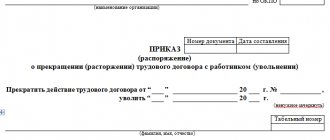The formation of a balance sheet for account 62 in the accounting of an organization makes it possible to quickly monitor:
- the size of the batch of goods shipped to buyers and customers in monetary equivalent - receivables from counterparties;
- amounts of advances transferred by customers on account of future deliveries - the company's accounts payable to customers;
- mutual settlements with buyers and customers according to the terms of supply contracts (for example, partial payment in advance, final payment upon delivery, etc.);
- accounting errors in specialized software products.
The balance sheet of 62 accounts allows for operational monitoring of the company’s mutual settlements with buyers and customers. The report can be generated daily, broken down by counterparties, counterparties and agreements with them, and also provides for a more in-depth reading of data for each settlement document (advance payments or shipments of goods).
As a rule, according to the supply agreement, settlements with counterparties for the shipment of goods or the provision of services and performance of work are carried out in one of the following sequences:
- Postpayment (funds are transferred after the goods arrive at the warehouses, after the full provision of the agreed list of services);
- Prepayment (shipment of goods or performance of work is carried out after full payment);
- Mixed payments (partial advance payment, final payment after receipt of assets).
In the company's accounting records, the display of all settlements with buyers and customers regarding the purchase of inventory, provision of any services (including utilities) and work is carried out on account 62. This account is active-passive and can have a debit or credit balance depending on the calculations made (accounting reflects all supplies or services rendered, regardless of the order of transfer of funds for them). Data is entered on the basis of closing documentation in correspondence with the corresponding accounts for accounting for shipped goods (43, etc.), cash (50, etc.).
For a detailed analysis of the account, it is possible to open additional sub-accounts:
62.02 – accounting for advance payments received by the organization on account of future shipments;
62.01 – accounting of settlements with buyers and customers according to the terms of the supply agreement.
Addition from the author! It is possible to open additional sub-accounts for keeping records of settlements in foreign currency.
Description of account 62
Account 62 is active-passive, so it can have both a credit and a debit balance.
IMPORTANT! The balance at the beginning and end of the period must be reflected in subaccounts in detail. This is due to the fact that the debit balance is the debt of customers, and the credit balance is the prepayment received for future shipments and work.
For a breakdown of accounts payable and receivable, see the material.
It is convenient to conduct analytical accounting for this account both in the context of subaccounts and for each customer. Many accounting programs allow you to support such analytics. As a result, turnover for the account as a whole is formed, and if necessary, it is always possible to generate SALT for each customer. Such a report can also serve as the basis for drawing up a statement of reconciliation of settlements with the counterparty.
In what cases are receivables revalued, find out from the Ready-made solution from ConsultantPlus. Trial full access to the system can be obtained for free.
Formation of SALT 62 accounts in 1C
When maintaining accounting records in specialized 1C software products, it is possible to generate a detailed statement that will separately display all advance payments received, customer debt for shipped goods, and settlements in foreign currency.
Note from the author! In accounting programs, situations arise when, when generating a report on subaccounts, the same amount is displayed on different subaccounts. This error can be corrected by re-entering the documents in the correct sequence. If the restoration did not lead to the correction of the error, then you should pay attention to the established settlement rules according to the agreement: automatic offset of payments or linking payments to specific documentation. This error must be corrected, since the information affects the reliability of the financial statements (lines 1230, 1520).
The period for the formation of the balance sheet for settlements with buyers and customers is determined in an arbitrary interval depending on the purposes of monitoring (from one business day to several years), therefore SALT is one of the most convenient ways to check mutual settlements with counterparties (it is possible to create an interim report on to a specific buyer repeating the data of the reconciliation report).
The procedure for creating a report in 1C:
- In the menu, select Reports – Account balance sheet;
- Determine the period of interest and select the account for which the report will be generated (it is possible to generate a statement separately for each subaccount);
- Select report detailing: analysis of individual buyers and customers or detailed monitoring of all settlement documents for each counterparty;
- Create a statement and analyze the results.
Something to keep in mind! The SALT data for account 62 must fully correspond to the card for this account and the general SALT for all accounting accounts of the organization.
Formation of SALT according to account 62
Let's look at the process of generating a statement using an example.
Alfa Center LLC, on the basis of an agreement concluded with Polar Star LLC, must ship products worth 120,000 rubles to it. (including VAT 20,000 rubles) in March 20XX. In February 20XX, Polyarnaya Zvezda LLC transferred an advance payment for the full amount to Alpha Center LLC.
Read about how to fill out TORG-12 in this material.
For information about the features of the UTD, see the material “Universal transfer documents” .
Postings in the accounting of Alfa Center LLC:
| Dt accounts | CT account | Sum | Description | Primary document |
| February 20XX | ||||
| 51 | 62 "Advances" | 120 000 | Received advance payment reflected | Payment order, bank statement |
| 76 “VAT on advances received” | 68 “VAT payable” | 20 000 | VAT charged on advance payment | Invoice for advance payment, entry in the sales book |
| March 20XX | ||||
| 62 “Payments for products” | 90 | 120 000 | Sales reflected in accounting | TORG-12, invoice |
| 90 | 68 “VAT payable” | 20 000 | VAT reflected | Invoice |
| 62 "Advances" | 62 “Payments for products” | 120 000 | Prepayment under the contract has been credited | Accounting information |
| 68 “VAT payable” | 76 “VAT on advances received” | 20 000 | Accepted for deduction of VAT on advance payment | Entry in the purchase book |
For more information on how to reflect revenue, read the article “Controversial issues regarding the reflection of revenue with or without VAT (90 and 91 accounts)” .
IMPORTANT! The debit balance at the end of the period is formed according to the formula: debit balance at the beginning of the period plus the amount of debit transactions minus credit turnover. Credit balance at the end of the period: credit balance at the beginning of the period plus the amount of credit transactions minus debit turnover.
SALT in the accounting of Alfa Center LLC in March 20XX.
SALT for account 62 “Advances”:
| Initial balance | Revolutions | Final balance | |||
| Dt | CT | Dt | CT | Dt | CT |
| – | 120 000 | 120 000 | – | – | – |
SALT for account 62 “Payments for products”:
| Balance at the beginning | Revolutions | Closing balance | |||
| Dt | CT | Dt | CT | Dt | CT |
| – | – | 120 000 | 120 000 | – | – |
SALT for count 62 (synthetic):
| Initial balance | Revolutions | Final balance | |||
| Dt | CT | Dt | CT | Dt | CT |
| – | 120 000 | 240 000 | 120 000 | – | – |
If no postings were made between subaccounts, then the SALT will look like this:
SALT for account 62 “Advances”:
| Initial balance | Revolutions | Final balance | |||
| Dt | CT | Dt | CT | Dt | CT |
| – | 120 000 | – | – | – | 120 000 |
SALT for account 62 “Payments for products”:
| Balance at the beginning | Revolutions | Closing balance | |||
| Dt | CT | Dt | CT | Dt | CT |
| – | – | 120 000 | – | 120 000 | – |
SALT for count 62 (synthetic):
| Initial balance | Revolutions | Final balance | |||
| Dt | CT | Dt | CT | Dt | CT |
| – | 120 000 | 120 000 | – | 120 000 | 120 000 |
The concept of accounts receivable is discussed in this publication.
Is count 62 active or passive?
Account 62 is included in section VI “Calculations” of the Chart of Accounts.
This is a synthetic accounting account. Analytics on account 62 is carried out in relation to each buyer and each contract. Accounting account 62 is used quite often, since every organization has clients. An accountant needs to regularly monitor client debts in order to timely identify overdue debts. For this purpose, he has the right to open any number of sub-accounts for account 62. The chart of accounts with all subaccounts used must be fixed in the accounting policy.
Standard subaccounts that an accountant works with:
- 01 “Settlements with buyers and customers.”
- 02 “Calculations for advances received.”
- 03 “Bills received.”
In addition to these, you can add a subaccount for retail customers, for settlements in foreign currency, overdue debts, settlements between dependent parties, and so on.
Is count 62 active or passive? As we see from the essence of accounting for transactions on account 62, the balance on it reflects both positive and negative debt, that is, both our debt to customers and their debt to us. Thus, the balance on account 62 can be either a credit or a debit. This means that count 62 is active-passive. In the balance sheet, account 62 should be reflected in detail, that is, the debit balance is in the asset, and the credit balance is in the liability.
SALT for account 62 and balance sheet indicators
The credit balance of account 62 is included in the balance sheet liability, in accounts payable, and the debit balance is included in the balance sheet asset, in accounts receivable. This is directly stated in paragraph 73 of the order of the Ministry of Finance of the Russian Federation “On approval of the Regulations on accounting and financial reporting” dated July 29, 1998 No. 34n.
As can be seen from the example, if you do not make postings between subaccounts, the balance of account 62 will be overstated in both debit and credit. And this, in turn, will lead to distortion of balance sheet lines.
You can see an example of filling out a line for accounts receivable in the balance sheet in ConsultantPlus. Trial access to the system is provided free of charge.
Learn about the balance sheet from the following materials:
- “Balance sheet (assets and liabilities, sections, types)”;
- “Methodology for analyzing the balance sheet of an enterprise”;
- “How to fill out a balance sheet using the simplified tax system?”
What transactions are reflected in account 62 in accounting?

The law establishes that two types of debts must be kept in the account:
- To the company for goods sold, or work and services performed;
- To buyers for advances received from them.
When selling products or performing work, it must be immediately shown in the debit of the account. At the same time, the same amount is indicated on the sales accounts (90, 91) or the gradual execution of work. After receiving payment from the counterparty, it should be reflected on the credit of the account, simultaneously with the debit of the cash settlement accounts.
If the buyer makes payment before actually receiving goods or work, then this receipt is reflected in account 62 as an advance received. Since this amount is accounts payable, it must be recorded in separate accounts. It is not possible to show both debts collapsed.
Read more: How current payments are collected in bankruptcy
Also, the buyer may not repay the debt, but issue his own bill. This paper will act as a deferment of payment and a guarantee of further repayment of the debt.
Attention! This kind of payment must be taken into account in account 62, but separately from simple debt. However, if the buyer issues a third party’s bill of exchange as payment, then such a step is already recognized as a financial investment and is subject to accounting on account 58.
Results
The meaning of such an accounting register as SALT is quite simple. This statement shows the expanded balance at the beginning of the period, all turnover for the period, and the expanded balance at the end of the period. Each side of account balance 62 affects the balance lines.
If an organization receives an advance payment for its products or services, then you need to remember that after shipping the products or completing the work, when accounts receivable appear in the accounting, it must be closed with an advance payment, making internal postings between subaccounts.
Otherwise, the organization’s reporting will be compiled incorrectly. You can find more complete information on the topic in ConsultantPlus. Free trial access to the system for 2 days.
What does the balance sheet show for account 62
In order to obtain information on all customer debts and see at the same time all sub-accounts opened for the account, it is necessary to create a balance sheet for account 62. This report helps the accountant assess the overall picture of the state of settlements with clients of the organization. As its name implies, it displays the turnover and balance at the beginning and end of the counterparties for the selected period. The balance sheet discloses information for each counterparty with whom transactions were made for the specified period or at the beginning of which there was an outstanding debt, in the context of each agreement. The balance sheet data is divided into subaccounts.
You will see an example of a balance sheet in our figure.
Which accounts does it correspond with?
Accounting account 62 can correspond with the following accounts.
From the debit of account 62 to the credit of the following accounts:
- account 46 - when writing off the cost of the next stage of work;
- account 50 - when returning from the cash register previously deposited funds to the buyer;
- account 51 - when returning funds previously deposited by the buyer from the current account;
- account 52 – when making a return from a foreign currency account of funds previously deposited by the buyer;
- account 55 - when performing a return from a special account of funds previously deposited by the buyer;
- account 57 - when making a refund by postal order or similar method;
- account 62 - when offsetting a previously received advance to repay the buyer’s debt;
- account 76 - when conducting mutual offsets;
- account 79 - when conducting a sale through the head office or branch;
- account 90 - when reflecting the shipment of main products;
- account 91 - when reflecting other sales (fixed assets, materials, etc.).
Read more: Who should pay for the installation of an electric meter
On the credit of account 62, entries can be made to the debit of the following accounts:
- Account 50 - when reflecting payment for delivered goods to the cash register;
- account 51 - when reflecting payment for delivered goods to the current account;
- account 52 – when reflecting payment for goods delivered to a foreign currency account;
- account 55 – when reflecting payment for goods delivered to a special account;
- account 57 - when reflecting payment by the buyer through a savings account, postal order, etc.
- count 60 - when carrying out mutual offsets;
- account 62 – when offsetting a previously received advance to repay the buyer’s debt;
- Account 63 - when writing off a bad debt using a pre-formed reserve;
- account 66 - when offsetting the supply of products against a short-term loan;
- account 67 - when offsetting the supply of products against a long-term loan;
- account 73 - when selling products to company employees;
- account 75 - when conducting mutual offsets according to the requirements of the founders;
- account 76 - when conducting mutual offsets;
- account 79 - when conducting a sale through the head office or branch;
Legal aspects
Art. 31 of the Tax Code of the Russian Federation defines a set of forms that the Federal Tax Service has the right to request - these are documents that serve as the basis for calculating taxes and confirm their accuracy, as well as the timeliness of payments. The right to demand them from the enterprises subject to inspection is determined by Art. 93 of the Tax Code of the Russian Federation, and information about the work of the company being inspected may be requested from its partners or other persons (Article 93.1 of the Tax Code of the Russian Federation).
Read more: Violation of the terms of the employment contract by the employer
The Tax Code of the Russian Federation does not provide an exact list of documents required to be submitted; it only states that taxes are calculated on their basis (Clause 6, Article 23 of the Tax Code of the Russian Federation). The list of documents that inspectors have the right to request is open. However, this does not mean that the Federal Tax Service can refer to the need for any documents, and the company automatically has an obligation to submit them.
The following are considered to confirm tax accounting information (TA) and are mandatory for submission to the Federal Tax Service (Article 313 of the Tax Code of the Russian Federation):
3) calculations of the tax base.
The accounting card is not included in this list, but often the Federal Tax Service requires it along with other accounting forms.


